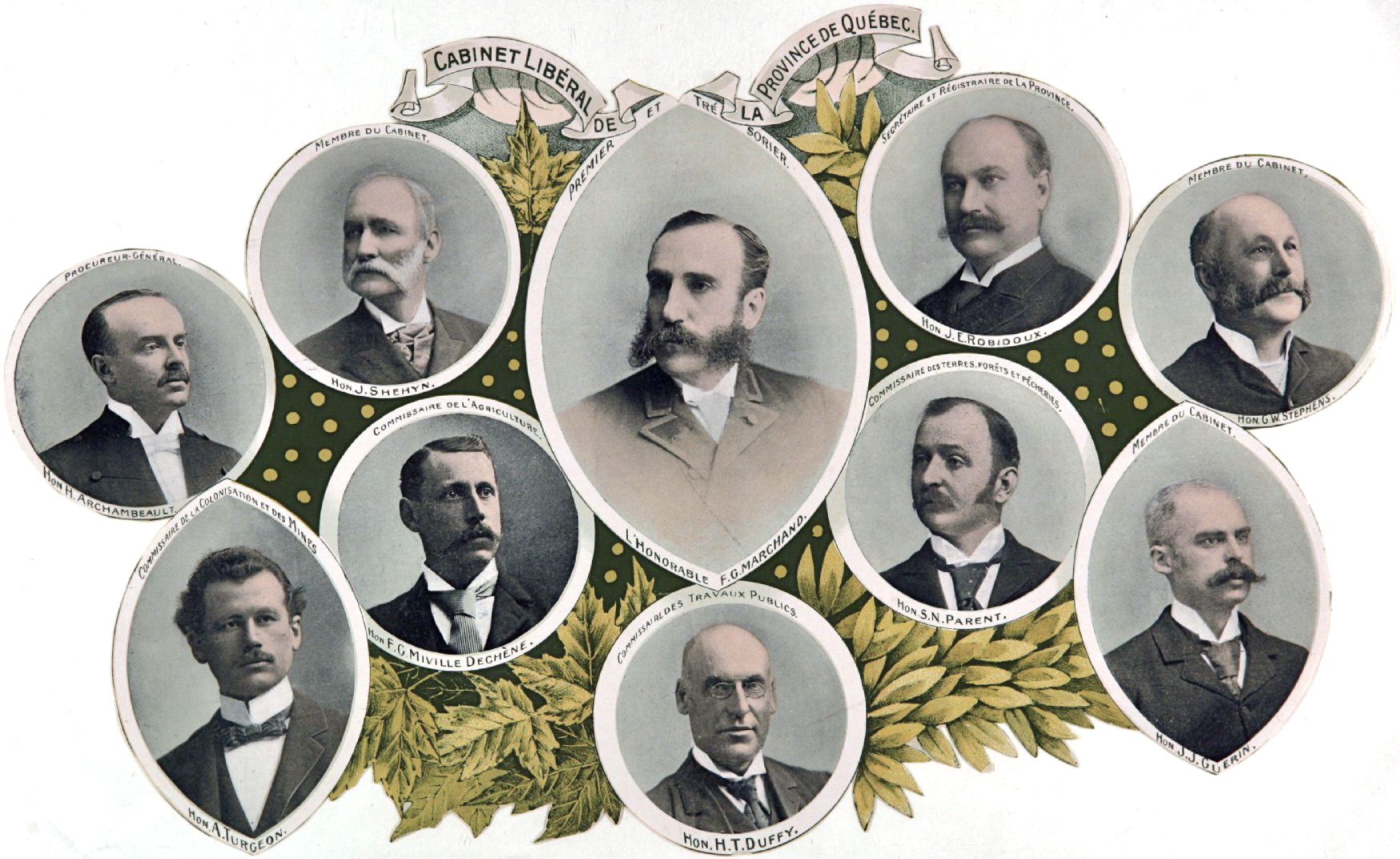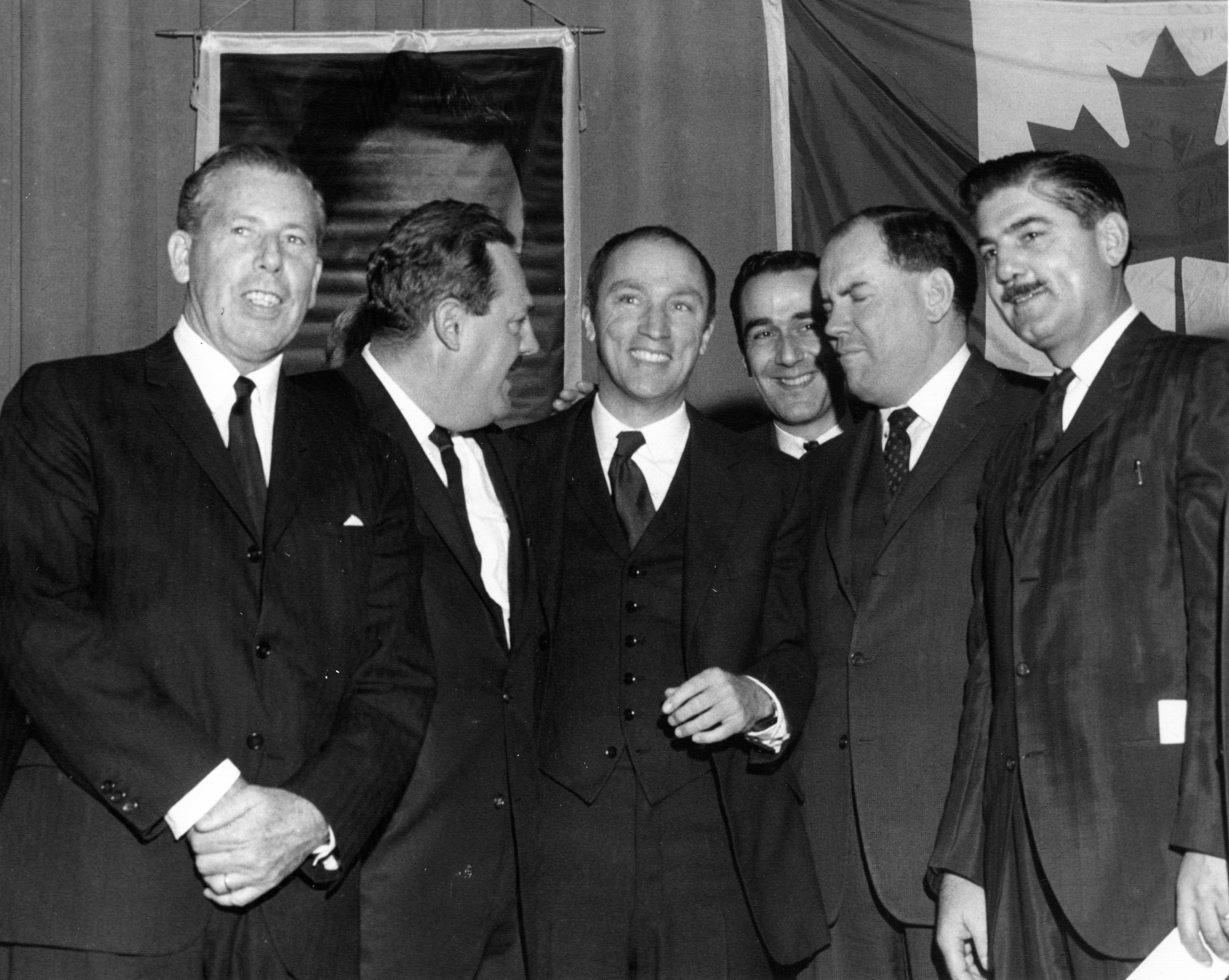|
1995 Quebec Referendum
The 1995 Quebec referendum was the second referendum to ask voters in the predominantly French language, French-speaking Provinces and territories of Canada, Canadian province of Quebec whether Quebec sovereignty movement, Quebec should proclaim sovereignty and become an independent country, with the condition precedent of offering a political and economic agreement to Canada. The culmination of multiple years of debate and planning after the failure of the Meech Lake Accord, Meech Lake and Charlottetown Accord, Charlottetown constitutional accords, the referendum was launched by the provincial Parti Québécois government of Jacques Parizeau. Despite initial predictions of a heavy sovereignist defeat, an eventful and complex campaign followed, with the "Yes" side flourishing after being taken over by Bloc Québécois leader Lucien Bouchard. Voting took place on 30 October 1995, and featured the largest voter turnout in Quebec's history (93.52%). The "No" option carried by a margi ... [...More Info...] [...Related Items...] OR: [Wikipedia] [Google] [Baidu] |
Quebec
Quebec ( ; )According to the Canadian government, ''Québec'' (with the acute accent) is the official name in Canadian French and ''Quebec'' (without the accent) is the province's official name in Canadian English is one of the thirteen provinces and territories of Canada. It is the largest province by area and the second-largest by population. Much of the population lives in urban areas along the St. Lawrence River, between the most populous city, Montreal, and the provincial capital, Quebec City. Quebec is the home of the Québécois nation. Located in Central Canada, the province shares land borders with Ontario to the west, Newfoundland and Labrador to the northeast, New Brunswick to the southeast, and a coastal border with Nunavut; in the south it borders Maine, New Hampshire, Vermont, and New York in the United States. Between 1534 and 1763, Quebec was called ''Canada'' and was the most developed colony in New France. Following the Seven Years' War, Quebec b ... [...More Info...] [...Related Items...] OR: [Wikipedia] [Google] [Baidu] |
Union Nationale (Quebec)
The Union nationale () was a conservative and nationalist provincial political party in Quebec, Canada, that identified with Québécois autonomism. It was created during the Great Depression and held power in Quebec from 1936 to 1939, and from 1944 to 1960 and from 1966 to 1970. The party was founded by Maurice Duplessis, who led it until his death in 1959. The party was often referred to in English as the National Union, especially when it was still an electoral force, by both the media and, at times, the party. History Origin The party started when the Action libérale nationale, a group of dissidents from the Quebec Liberal Party, formed a loose coalition with the Conservative Party of Quebec. In the 1935 Quebec election the two parties agreed to run only one candidate of either party in each riding. The Action libérale nationale (ALN) elected 26 out of 57 candidates and the Conservatives won 16 seats out of 33 districts. Conservative leader Maurice Duplessis became ... [...More Info...] [...Related Items...] OR: [Wikipedia] [Google] [Baidu] |
Liberal Party Of Quebec
The Quebec Liberal Party (QLP; french: Parti libéral du Québec, PLQ) is a provincial political party in Quebec. It has been independent of the federal Liberal Party of Canada since 1955. The QLP has always been associated with the colour red; each of their main opponents in different eras have been generally associated with the colour blue. The QLP has traditionally supported a form of Quebec federalist ideology with nuanced Canadian nationalist tones that supports Quebec remaining within the Canadian federation, while also supporting reforms that would allow substantial autonomism in Quebec. In the context of federal Canadian politics,Haddow and Klassen 2006 ''Partisanship, Globalization, and Canadian Labour Market Policy''. University of Toronto Press. it is a more centrist party when compared to Conservative and Liberal parties in other provinces, such as the British Columbia Liberal Party. History Pre-Confederation The Liberal Party is descended from the Parti canadien ... [...More Info...] [...Related Items...] OR: [Wikipedia] [Google] [Baidu] |
Brian Mulroney
Martin Brian Mulroney ( ; born March 20, 1939) is a Canadian lawyer, businessman, and politician who served as the 18th prime minister of Canada from 1984 to 1993. Born in the eastern Quebec city of Baie-Comeau, Mulroney studied political science and law. He then moved to Montreal and gained prominence as a labour lawyer. After placing third in the 1976 Progressive Conservative leadership election, he was appointed president of the Iron Ore Company of Canada in 1977. He held that post until 1983, when he successfully became leader of the Progressive Conservatives. He then led the party to a landslide victory in the 1984 federal election, winning the second-largest percentage of seats in Canadian history (at 74.8 percent) and receiving over 50 percent of the popular vote. Mulroney later won a second majority government in 1988. Mulroney's tenure as prime minister was marked by the introduction of major economic reforms, such as the Canada–United States Free Trade Agreem ... [...More Info...] [...Related Items...] OR: [Wikipedia] [Google] [Baidu] |
Patriation Reference
''Reference Re Resolution to amend the Constitution'' – also known as the Patriation Reference – is a historic Supreme Court of Canada reference case that occurred during negotiations for the patriation of the Constitution of Canada. The court affirmed the existence of an unwritten dimension to the constitution and the majority held that by constitutional convention, amendments to the constitution require a substantial degree of provincial consent. However, a differently-constituted majority of the court held that there was no ''legal'' barrier to the federal government seeking a constitutional amendment without any provincial consent. Political debate over patriating the Constitution Under the leadership of Prime Minister Pierre Elliot Trudeau, the federal government of Canada sought to patriate the constitution. Specifically, the aim of the government was to make a request to the United Kingdom Parliament—then the only body with the appropriate legal authority—t ... [...More Info...] [...Related Items...] OR: [Wikipedia] [Google] [Baidu] |
Constitution Act Of 1982
The ''Constitution Act, 1982'' (french: link=no, Loi constitutionnelle de 1982) is a part of the Constitution of Canada.Formally enacted as Schedule B of the ''Canada Act 1982'', enacted by the Parliament of the United Kingdom. Section 60 of the ''Constitution Act, 1982'' states that the Act may be called the "''Constitution Act, 1982''", and that the ''Constitution Acts'' can be collectively called the "''Constitution Acts, 1867 to 1982''". The Act was introduced as part of Canada's process of patriating the constitution, introducing several amendments to the ''British North America Act, 1867'', including re-naming it the ''Constitution Act, 1867''.Section 1 of the ''British North America Act, 1867'' was amended to be re-named as the ''Constitution Act, 1867.'' Section 20 of the ''Constitution Act, 1867'' was repealed and replaced by section 5 of the Canadian Charter of Rights and Freedoms; and sections 91(1) and 92(1) were repealed: ''Constitution Act, 1982'', s. 53 and Sche ... [...More Info...] [...Related Items...] OR: [Wikipedia] [Google] [Baidu] |
Canadian Charter Of Rights And Freedoms
The ''Canadian Charter of Rights and Freedoms'' (french: Charte canadienne des droits et libertés), often simply referred to as the ''Charter'' in Canada, is a bill of rights entrenched in the Constitution of Canada, forming the first part of the ''Constitution Act, 1982''. The ''Charter'' guarantees certain political rights to Canadian citizens and civil rights of everyone in Canada from the policies and actions of all areas and levels of the government. It is designed to unify Canadians around a set of principles that embody those rights. The ''Charter'' was signed into law by Queen Elizabeth II of Canada on April 17, 1982, along with the rest of the ''Constitution Act, 1982''. The ''Charter'' was preceded by the '' Canadian Bill of Rights'', enacted in 1960, which was a federal statute rather than a constitutional document. As a federal statute, the ''Bill of Rights'' could be amended through the ordinary legislative process and had no application to provincial laws. The ... [...More Info...] [...Related Items...] OR: [Wikipedia] [Google] [Baidu] |
Canadian Constitution
The Constitution of Canada (french: Constitution du Canada) is the supreme law in Canada. It outlines Canada's system of government and the civil and human rights of those who are citizens of Canada and non-citizens in Canada. Its contents are an amalgamation of various codified acts, treaties between the Crown and Indigenous Peoples (both historical and modern), uncodified traditions and conventions. Canada is one of the oldest constitutional monarchies in the world. According to subsection 52(2) of the ''Constitution Act, 1982'', the Canadian Constitution consists of the ''Canada Act 1982'' (which includes the ''Constitution Act, 1982''), acts and orders referred to in its schedule (including in particular the ''Constitution Act, 1867'', formerly the ''British North America Act, 1867''), and any amendments to these documents. The Supreme Court of Canada has held that the list is not exhaustive and also includes a number of pre-confederation acts and unwritten components ... [...More Info...] [...Related Items...] OR: [Wikipedia] [Google] [Baidu] |
Patriate
Patriation is the political process that led to full Canadian sovereignty, culminating with the Constitution Act, 1982. The process was necessary because under the Statute of Westminster 1931, with Canada's agreement at the time, the British parliament had retained the power to amend Canada's Constitution Acts (Statute of Westminster sec. 7(1)), and to enact more generally for Canada at the request and with the consent of the Dominion (sec. 4). That authority was removed from the UK by the enactment of the Canada Act 1982 on March 29, 1982, by the Parliament of the United Kingdom, as requested by the Parliament of Canada. Patriation was subsequently confirmed by the Constitution Act, 1982, part of the Canada Act 1982. A proclamation bringing the Constitution Act, 1982 into effect was signed by Elizabeth II, as Queen of Canada, Prime Minister Pierre Trudeau and Minister of Justice Jean Chrétien on April 17, 1982, on Parliament Hill, in Ottawa. The monarch's constitutional powers ... [...More Info...] [...Related Items...] OR: [Wikipedia] [Google] [Baidu] |
Pierre Trudeau
Joseph Philippe Pierre Yves Elliott Trudeau ( , ; October 18, 1919 – September 28, 2000), also referred to by his initials PET, was a Canadian lawyer and politician who served as the 15th prime minister of Canada The prime minister of Canada (french: premier ministre du Canada, link=no) is the head of government of Canada. Under the Westminster system, the prime minister governs with the Confidence and supply, confidence of a majority the elected Hou ... from 1968 to 1979 and from 1980 to 1984. He also briefly served as the Leader of the Opposition (Canada), leader of the Opposition from 1979 to 1980. He served as leader of the Liberal Party of Canada from 1968 to 1984. Trudeau was born and raised in Montreal, Quebec; he rose to prominence as a lawyer, intellectual, and activist in Quebec politics. Although he aligned himself with the social democratic New Democratic Party, he felt that they could not achieve power, and instead joined the Liberal Party. He was e ... [...More Info...] [...Related Items...] OR: [Wikipedia] [Google] [Baidu] |
Sovereignty-association
The Quebec sovereignty movement (french: Mouvement souverainiste du Québec) is a political movement whose objective is to achieve the sovereignty of Quebec, a province of Canada since 1867, including in all matters related to any provision of Quebec's public order that is applicable on its territory. Sovereignists suggest that the people of Quebec make use of their right to self-determination – a principle that includes the possibility of choosing between integration with a third state, political association with another state or independence – so that Quebecois, collectively and by democratic means, give themselves a sovereign state with its own independent constitution. Quebec sovereigntists believe that such a sovereign state, the Quebec nation, will be better equipped to promote its own economic, social, ecological and cultural development. Quebec's sovereignist movement is based on Quebec nationalism. Overview Ultimately, the goal of Quebec's sovereignist movement ... [...More Info...] [...Related Items...] OR: [Wikipedia] [Google] [Baidu] |
1980 Quebec Referendum
The 1980 Quebec independence referendum was the first referendum in Quebec on the place of Quebec within Canada and whether Quebec should pursue a path toward sovereignty. The referendum was called by Quebec's Parti Québécois (PQ) government, which advocated secession from Canada. The province-wide referendum took place on May 20, and the proposal to pursue secession was defeated by a 59.56 percent to 40.44 percent margin. A second referendum on sovereignty, which was held in 1995, also rejected pursuing secession, albeit by a much smaller margin (50.58% to 49.42%). Background Quebec, a province in the Canadian Confederation since its foundation in 1867, has always been the sole majority French-speaking province. Long ruled by forces (such as the Union Nationale) that focused on affirmation of the province's French and Catholic identity within Canada, the province underwent a Quiet Revolution in the early 1960s. The Quiet Revolution was characterized by the effective secu ... [...More Info...] [...Related Items...] OR: [Wikipedia] [Google] [Baidu] |






